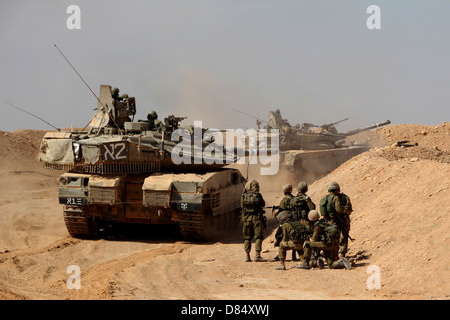

The first MCV’s were fielded in 2016 with plans for around 300 and the possibility of replacing some older MBTs. Despite its moderate weight its modular armour resists penetration of 35mm and 40mm projectiles in the frontal area and 14.5mm projectiles all around. In addition, MCV can be transported in the Kawasaki C-2 tactical cargo aircraft allowing deployment to even remote islands. Its wheeled running gear permits autonomous long distance road movements at speeds up to 100 km/h. The turret has fire controls equivalent to the latest MBT including the commander’s independent panoramic hunter-killer sight that allows target detection on the move and hand off engagement by the gunner. Produced by Mitsubishi Heavy Industries the 26 tonne eight wheeled drive vehicle mounts a 105mm rifled cannon. The Manoeuvre Combat Vehicle (MCV) or Type 16 debuted in 2013. The JGSDF recognizing a capability gap in its forward defence strategy developed a highly mobile direct fire support combat vehicle. A number of armies in the Asian-Pacific have chosen increased manoeuvrability and expeditionary capability accepting reduced passive protection.
#BATTLE TANK FORCE FIELD DRIVER#
A principle driver for weight is the protection level requested since technologies have been introduced that allow for even 120mm cannon to be mounted in lighter vehicles. Even the Japanese Ground Self Defence Forces (JGSDF) Type 10 MBT, designed specifically to be lighter, comes in at 48 tonnes. Modern MBT’s like the Rheinmetall Leopard 2A6 have a combat weight of over 62 tonnes. In addition, their transport by air and sea to conduct expeditionary operations is limited. This is particularly true on rural roads and over bridges but also travelling long distances on paved roadways. The difficulty is that this MBT has become increasingly difficult to move easily in response to operational demands. The current generation of main battle tank (MBT) has become to some military the ideal combination of mobility, firepower, and protection that cannot be compromised. It is a tactical lesson armies operating in the Asian-Pacific appear to have taken to heart as they acquire not only modern main battle tanks but develop and field other highly manoeuvrable and deployable direct fire gun systems. The fact is that the tanks attributes are multiplied when it is employed and properly supported in terrain and conditions where or when it is not anticipated. The success of Japan’s lightly armoured and armed tanks in overcoming the British Commonwealth defence of the Malaya peninsula in 1942 is a case in point. In fact, history has repeatedly shown that small numbers of tanks even with lesser capabilities have dominated battlefields. The impact of these attributes is not necessarily dependant on even some ‘perfect’e mix of these characteristics. It is the combination of mobility, firepower, and protection that defines the tank.


 0 kommentar(er)
0 kommentar(er)
